Marina Abramović
1. What are some of your first impressions of Marina Abramovic’s performance works, based on the documentary? Use an image/example of one or two works to describe aspects you admire and aspects you might agree are problematic.

The intensity of Marina Abramovic’s work immediately struck me upon my initial viewing. Some of her works, most notably the one in which she uses a razor blade to etch a pentagram into her own abdomen, are what I would describe as grotesque. What stands out the most is the danger embedded into many of her performances, as some appear to gamble with the limits of life itself. However, it is this element of risk that shows her unwavering devotion to her craft and her desire to push herself to the very edge in the name of artistic expression. A large portion of her work involves her baring herself in both a literal and metaphorical sense, presenting her vulnerability to the world. While some of her more violent pieces may deter certain audiences, it is important to note that she also offers performances that resonate with a broad spectrum of people.
“The Artist is Present,” for instance, extends an inclusive invitation to all who wish to engage. Within the documentary showcasing this work, we witness a diverse array of individuals taking a seat across from Marina, their shared gaze into each other’s eyes creating a profound connection. This connection is established without the exchange of words or actions, revealing a beauty in the simplicity of human interaction. Marina Abramovic has created a variety of performances over the course of her long career that have the ability to evoke a wide range of emotions among her audience. These range from the intense feelings of amazement and strong emotional resonance to the visceral reaction of disgust.

2. What have you learned about features of performance art based on Abramovic’s work? Name a few key features according to her precedents. Include an image to illustrate. Consider her quote “When you perform it is a knife and your blood, when you act it is a fake knife and ketchup.”
Marina challenges her physical limits and endures physically demanding or even risky performances in some of her works. In the documentary, we hear the quote “Performance is all about state of mind”. We glimpse a portion of the rigorous training Marina puts the 30 selected artists through to prepare them mentally and physically for the demanding task of performing in a gallery setting. Although only snippets of the training are shown, much of it appears to involve activities that help focus and clear the mind, such as sorting grains of different colours on a plate. Prolonged periods of sitting or standing prove to be extremely taxing, not only on the body but also on the mind. In the documentary, we witness how Marina’s piece “The Artist is Present” takes a toll on her both physically and mentally, particularly after months of sitting in a wooden chair. Some of her works delve even deeper into exploring physical discomfort than “The Artist is Present,” as exemplified by “Rhythm 10.” In this performance, she stabs various knives between her fingers, occasionally drawing her own blood. Unlike in a movie or play where such blood would be entirely fake, Marina’s pain is very real. She uses this genuine pain as a means to liberate herself from the fear she has of it.

3. Discuss the ways performance art resists many museum and commercial art world conventions. How does Abramovic solve/negotiate some of these challenges, and do you find these compromises add to, or undermine the ideas at play in her work?
The documentary featuring Marina highlights numerous performances that actively involve the audience. For instance, in “Imponderabilia,” two performers stand nude in a doorway, and audience members must pass between them. In most museums, viewers typically glance at artworks briefly before proceeding to the next work. However, Marina and other similar performance artists demand the audience’s attention and participation. There is a connection being made between the artist and the participant in performance art such as “The Artist is Present.” Throughout the documentary, we witness individuals shedding tears as they gaze into Marina’s eyes. This connection cannot be framed or sold, as is often the case in the art world. Nevertheless, in Marina’s MoMA exhibition, she combines traditional artworld practices of presenting works on screens for brief observation and featuring live performers who require interaction from the audience. This approach caters to both ends of the spectrum: those who prefer to watch performances on a screen and those who seek to engage with live performance art.
One KILOMETRE
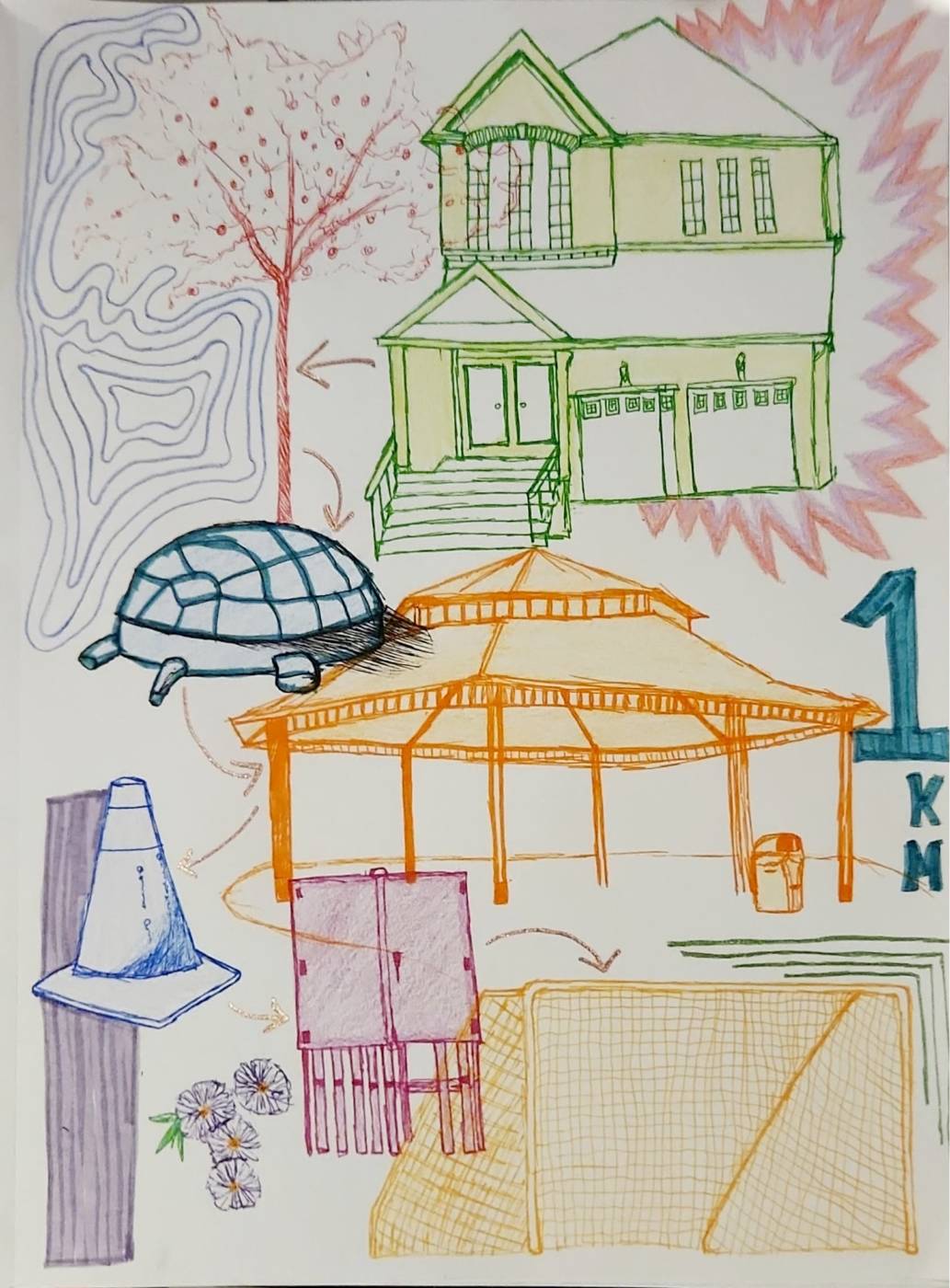
When attempting to calculate the distance to a location, I usually consider solely the estimated travel time rather than the actual distance in kilometres. This preference results from my ongoing difficulty picturing a kilometre’s actual length. For this project, I wanted to better comprehend the concept of a kilometre. I did this by taking a stroll across my neighbourhood and carefully sketching seven distinct points as I went. My home served as the starting point of the drawing, and a soccer goalpost served as the drawing’s ending point, ensuring they were precisely one kilometre apart. The final illustration resembles a map, with arrows indicating the path across a one-kilometre distance. Now, if I see a distance listed as “7km away” on Google Maps, I can simply compare it to the trip from my house to the football goalpost, multiplied by seven.
Pipilotti Rist
- Post an image from one of Rist’s videos that you are most interested in. Summarize the action of the video. Who is performing, and how? Describe the images – including framing, colours, and movement. How did she shoot and edit the video? Describe the sound and how it interacts/enhances/competes with the images. How is it installed in a gallery – in terms of projection/scale/presentation in the context of other things? How does the work strike you?
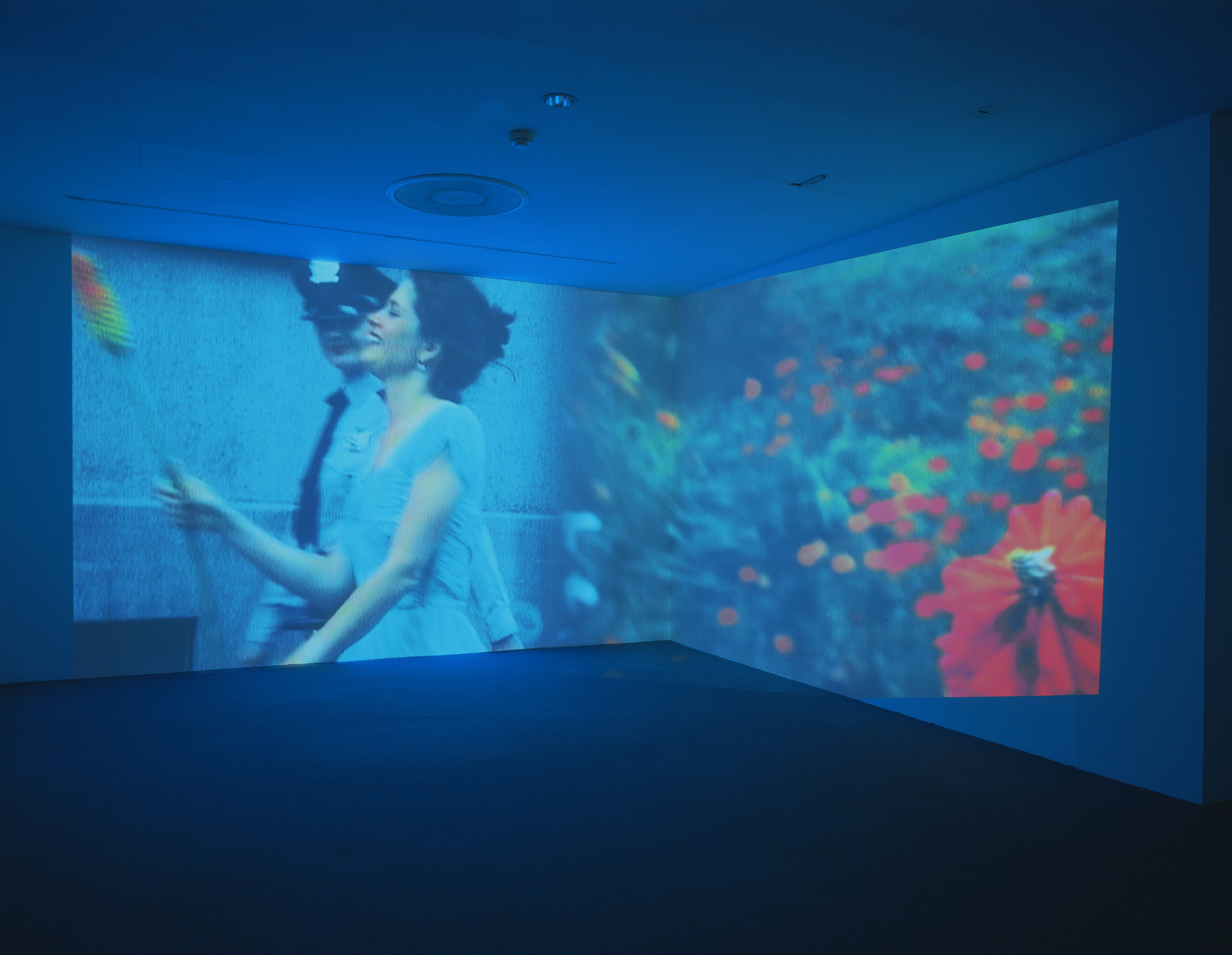
The image displayed is a snapshot from Pipilotti Rist’s work titled “Ever is Over All.” In this video, a woman strolls happily along a sidewalk, clutching a long, flower-shaped object that, from time to time, shatters the windows of the cars she passes. Her attire, a light blue dress with red heels, evokes the image of Dorothy from “The Wizard of Oz” travelling down the yellow brick road. On the right side of the screen, videos of a red hot poker flower are featured. The camera captures uncomplicated, slow shots, alternating between side and frontal views of the woman, allowing viewers time to absorb the actions unfolding in the video. Throughout the video, the sounds of a chirping bird and a humming woman play in the background, occasionally interrupted by the jarring noise of shattering windows.
What particularly stood out to me in this piece was the woman’s relaxed and graceful demeanour despite committing literal crimes. The contrast between her joyful expression, the upbeat music soundtrack, and the violent act of smashing car windows is incredibly intriguing. Watching it almost feels empowering, especially when we witness the approving glance from the passing policewoman.
2. Rist has had a long career in video art making – how do you relate it to the kinds of videos that you might see all the time on Tik Tok or YouTube, in our time? Reflect on her performances and also – on her ideas (particularly about women’s bodies, sexuality, exposure, behaving strangely or subversively…) and how they play out from examples in her works.

The world of social media and the artwork of Pipilotti Rist have similarities and differences. In some of her works, Rist explores themes concerning women’s bodies and sexuality, portraying the female form in unconventional manners, as exemplified in her piece “Be Nice To Me (Flatten 04).” Similarly, on platforms like TikTok and YouTube, you can occasionally encounter individuals who engage in eccentric and unconventional behaviour with the aim of garnering attention and views.
Additionally, Rist’s video art usually involves prolonged, immersive experiences that might last for several minutes to hours, requiring from viewers sustained attention and contemplation. In contrast, TikTok is known for its short, concise videos typically restricted to one minute or less. Viewers don’t have to think too deeply while scrolling through TikTok at 1 a.m.
3. Experiment: While still at school – put on your sweater/shirt INSIDE OUT. How does this change how you feel? Is it changing how other’s are treating you? If you can wear your sweater/shirt inside out all day – make a few notes about the results of this very small change in your presentation in public. Is this a performance? Why?
I felt incredibly self-conscious while carrying out this experiment. In my mind, I imagined people were staring and wondering why my shirt was inside out. Even though no one asked any questions, I felt like they were secretly judging me. Over time, the embarrassment faded and I started to forget that my shirt was even inside out. I believe that this action could be considered a performance. Even commonplace acts, such as clothing choices, can take on performative elements in the field of art and self-expression when used to convey ideas or prompt thought. So, whether or not wearing your shirt inside out is deemed a performance depends on the context, intent, and how others perceive it.
One Feat, Three Ways
The One-Shot: Dinner Time
We initially planned to feed each other food while wearing blindfolds for our one-shot video. After giving it some thought and doing some more brainstorming, we concluded that this was a little too safe and went with a messier food, like spaghetti, along with the addition of the idea of eating with enormous utensils instead of a blindfold. On the day of filming, we decided it would be even better if one of us fed the other instead of just having one of us eat the spaghetti by themselves. This allows our videos to all have the same overarching concept of feeding someone.
The Sequence: Ways to Feed Someone
For our sequence, we wanted to play with the different dynamics between two people feeding each other. At first, our sequence was gonna be us eating different foods using various angles and shots, however, this idea also changed over time. As seen in the video, we chose to portray a mother and child, feeding a person who is sleeping/dead, up high and down low, standing far apart, and using a big spoon and a tiny spoon.
The Loop: Endless Feeding
We filmed this video first, and it’s definitely the one that required the most takes. The spaghetti was so soft that it kept breaking every time we tried to eat it. We also had to keep reshooting so we could bite off the noodle at the right moment to capture the tension.
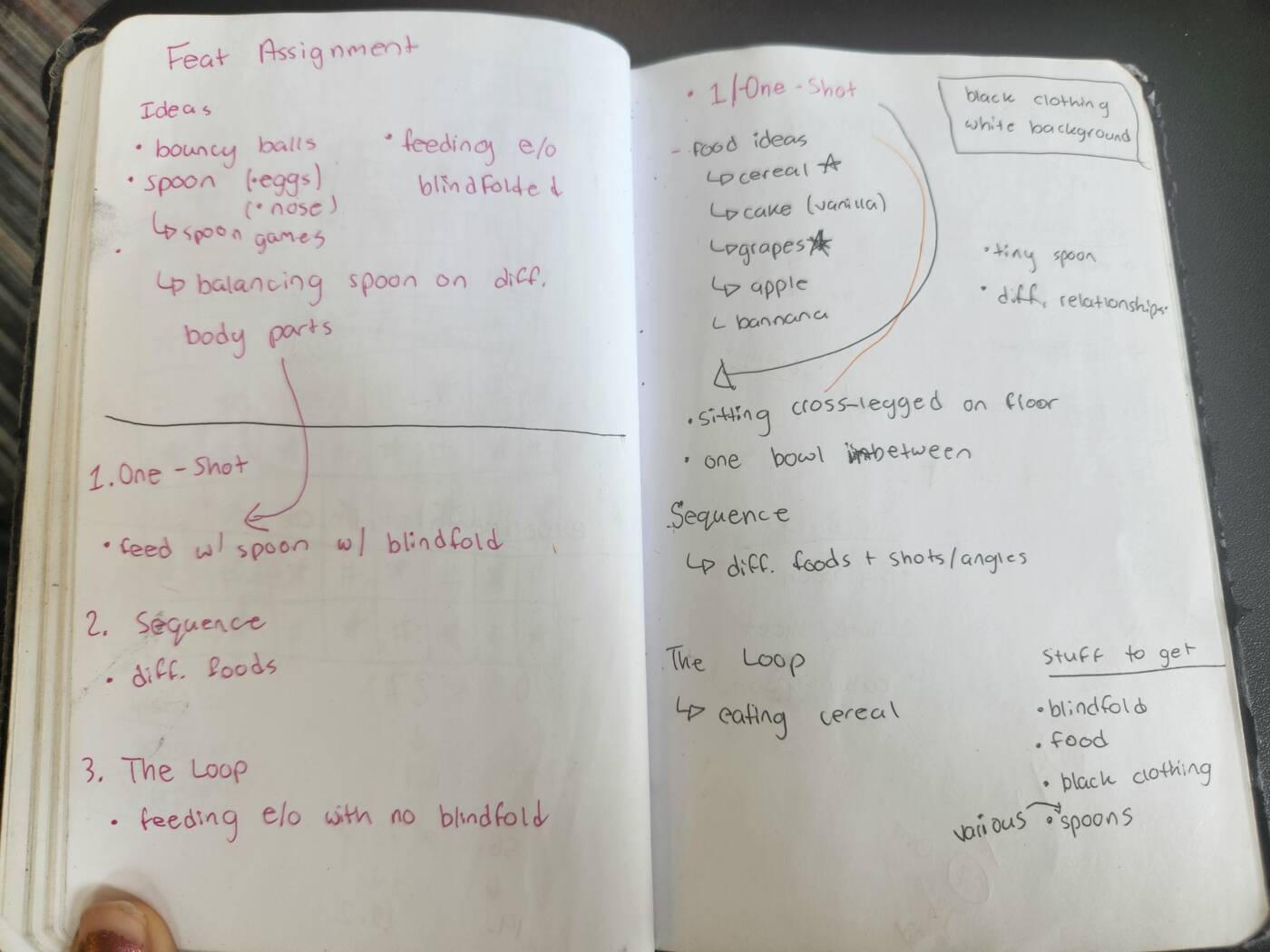
To the left is our original brainstorming for this project. As you can see, we tried to include a variety of foods—especially ones that would be manageable—in each video. But we reasoned that it could be more fascinating to explore messy foods than safe foods. Although we had intended to highlight spoons as our featured item, we ultimately concluded that it would be better to focus on the idea of feeding someone.
Here are the notes for our final ideas, including the titles of the videos, the order of shots, etc. Although it took us some time to get there, we eventually had a solid plan for each video, even making changes on the spot for some.
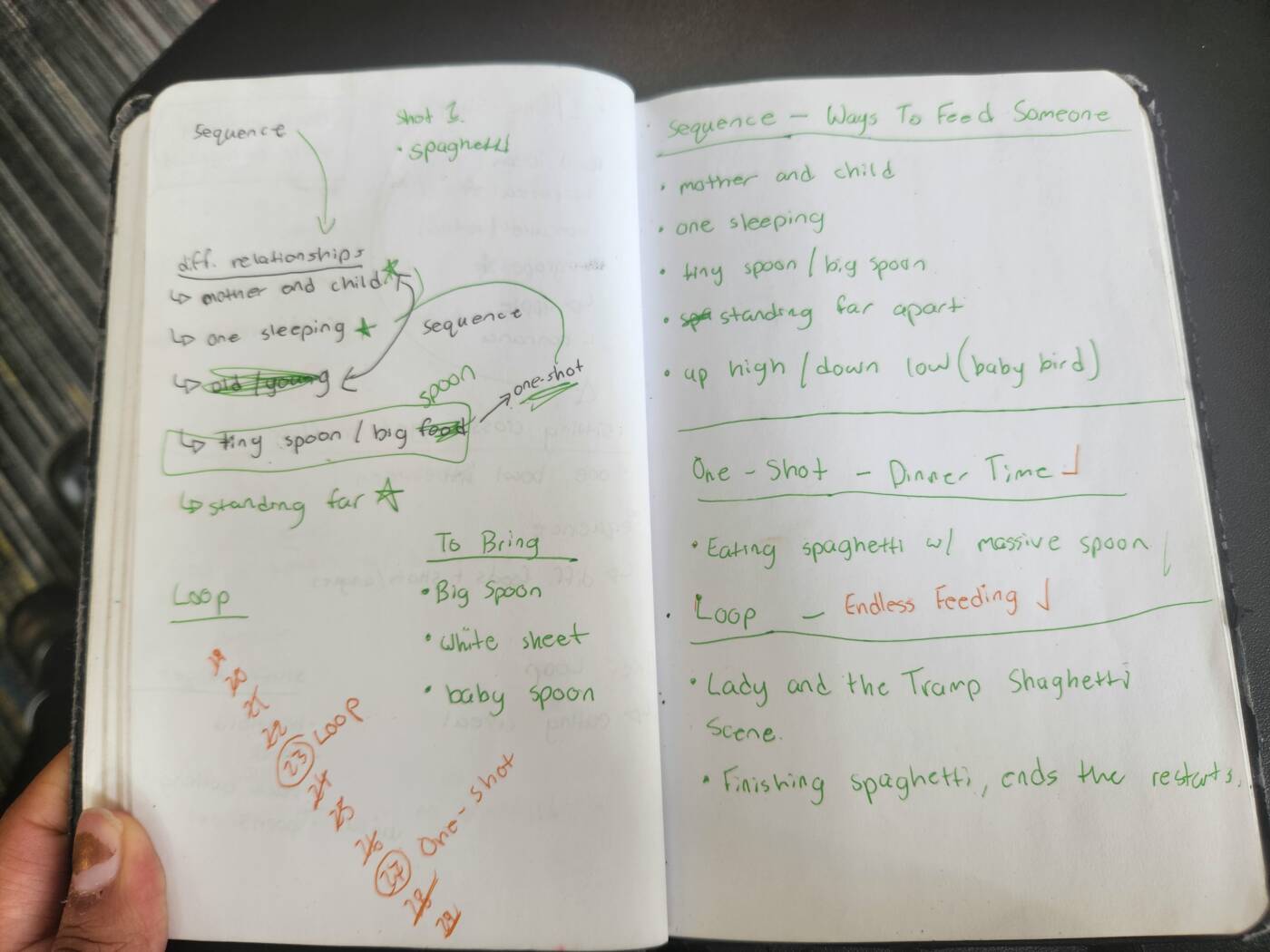
AUDIO ART
Meals of the Day
While brainstorming for this assignment, I thought about the various sounds that I hate. One of the first ones that came to mind was the sounds of people eating. Whenever I come across mukbang videos on TikTok or YouTube, I always cringe as soon as I hear the chewing sounds that they make. As a certified Ipad baby who can only eat while watching something, I usually drown out the sounds of my own eating. However, for this assignment, I embraced the sounds and focused solely on them.
While recording, I purposely tried to make the eating noises as nasty as possible, even eating with my mouth open at some points. I also chose foods that I knew would make distinct noises, such as the chips that I chose for the snack.
Conceptual Portrait
proposal of ideas
For as long as I can remember, I’ve always been someone who enjoyed creating things. I’ve picked up so many hobbies over the years that I can hardly keep count of them all. Some were short-lived while others I still do today. I have quite a collection of my leftover crafts from my hobbies and thought it might be a good idea to use these objects for this assignment. I’m still a bit unsure of how I would display these crafts, but one of my ideas was to create a sort of “gallery” of my unfinished and completed works over the years. There’s also the artist Micah Lexier who displays objects in an organized manner, such as in “Twelve of One.” I could also approach my final work similarly, but of course in my own way.

Above are just some of the examples I have of crafts from over the years. I also had the idea to focus on the hobbies that I have right now and make a sort of “portrait of a reader” or “portrait of a crocheter” but I have no idea what I could do with those ideas.
my collection of hobbies and crafts
For this assignment, I’ve decided to do a conceptual portrait of myself using the various crafts and hobbies that I have completed (mostly didn’t complete) throughout my life. Since I was very young, I’ve always had the habit of picking up hobbies or starting projects that I would work on intensely for a week or so and then forget about for years. In my video, I display a few of these projects, as well as add commentary on when the projects were started and their level of completion. Although I am very well aware that I have this habit, I will continue to have a million unfinished projects lying around my room, waiting to be finished. I really like the idea that these messy and incomplete projects each have their own moment to shine, momentarily leaving the storage box they were crammed in. Most of these objects haven’t seen the light of day in many, many years. Each of these works also shows what kind of taste I had throughout my life.
BUTTONS
what’s the weather?
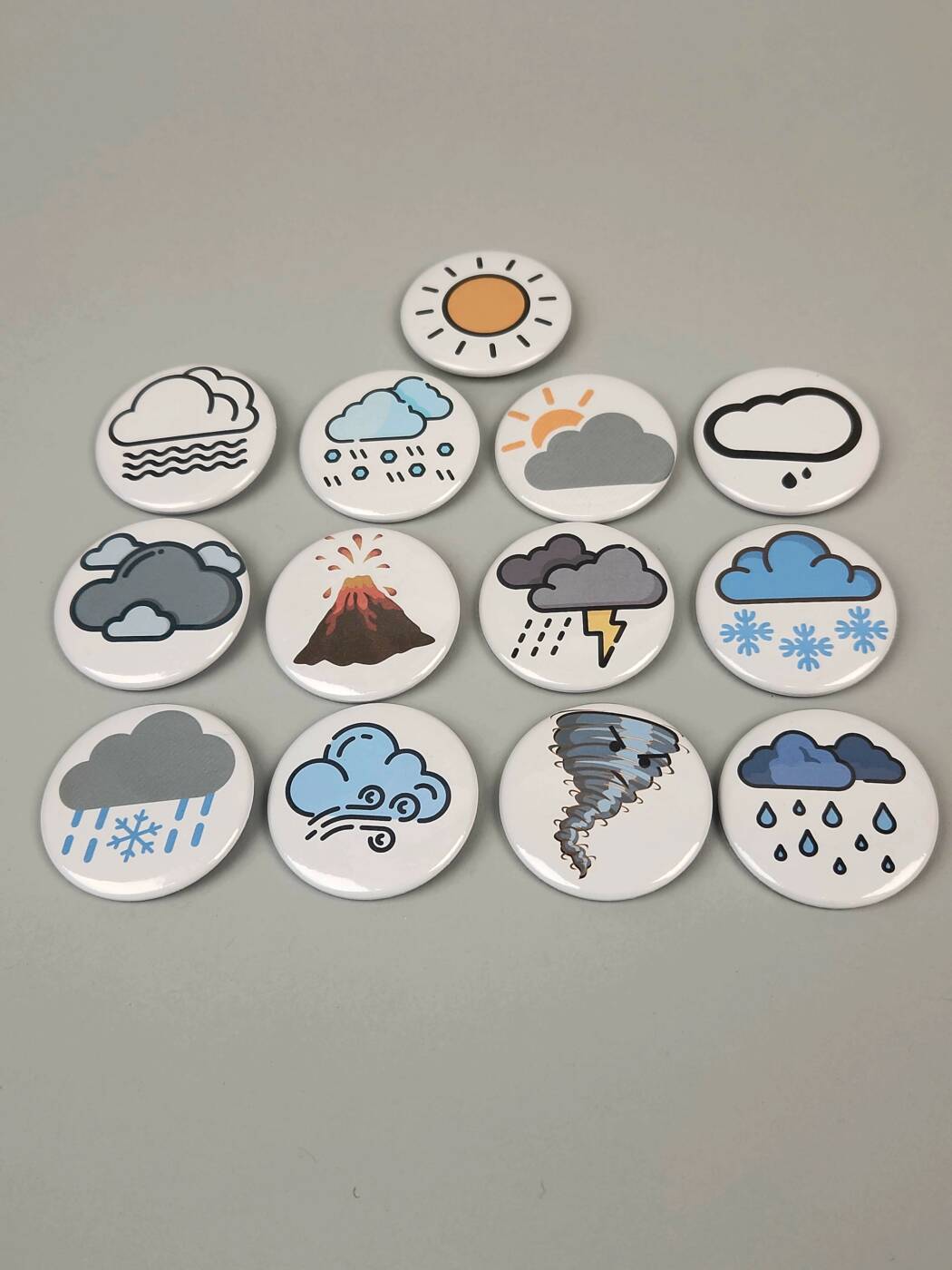
For my series of buttons, I decided to do something related to the weather. I have a weather app on my phone that sends me random notifications throughout the day of what the current weather in my location is, regardless of whether I’m outside or inside. I think it’s funny getting a notification that it’s raining when I’m outside standing in the rain, so I took that concept and made it into buttons. The idea is to wear these buttons corresponding to what weather it is outside. As an example, I have a video of myself standing outside in the snow wearing my snow button. Somebody in class also mentioned that these buttons could be helpful if you’re entering a place with no windows as a way to let everyone else there know what the weather is like.
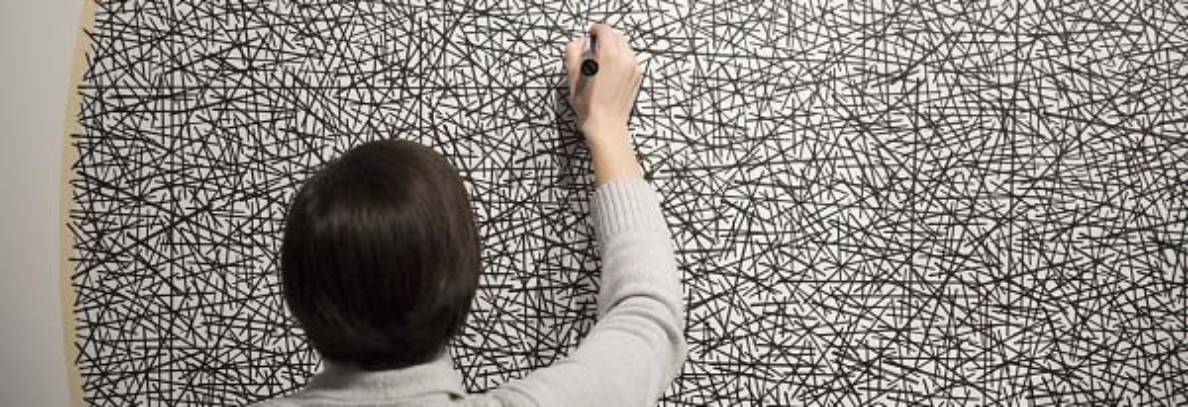
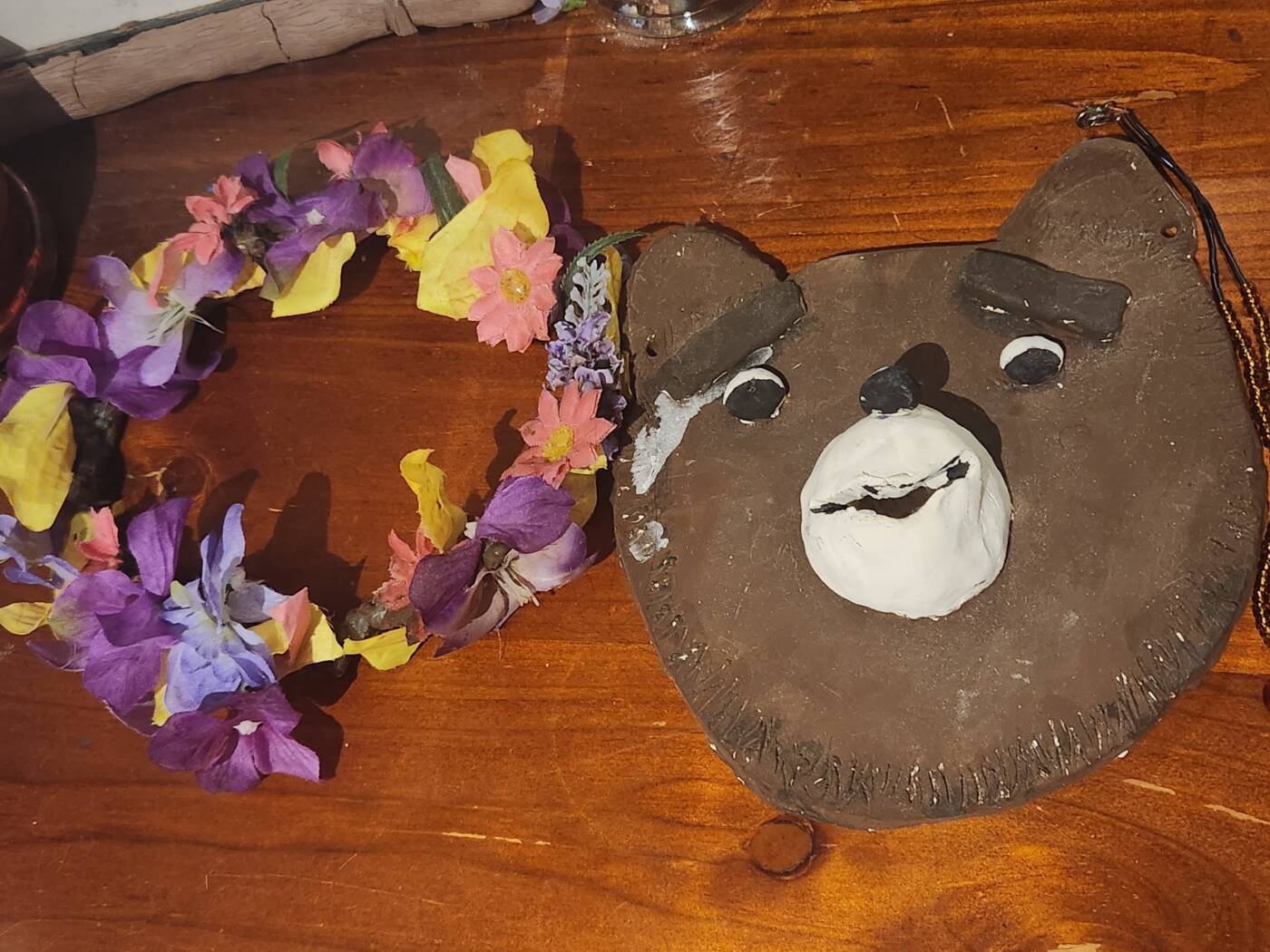
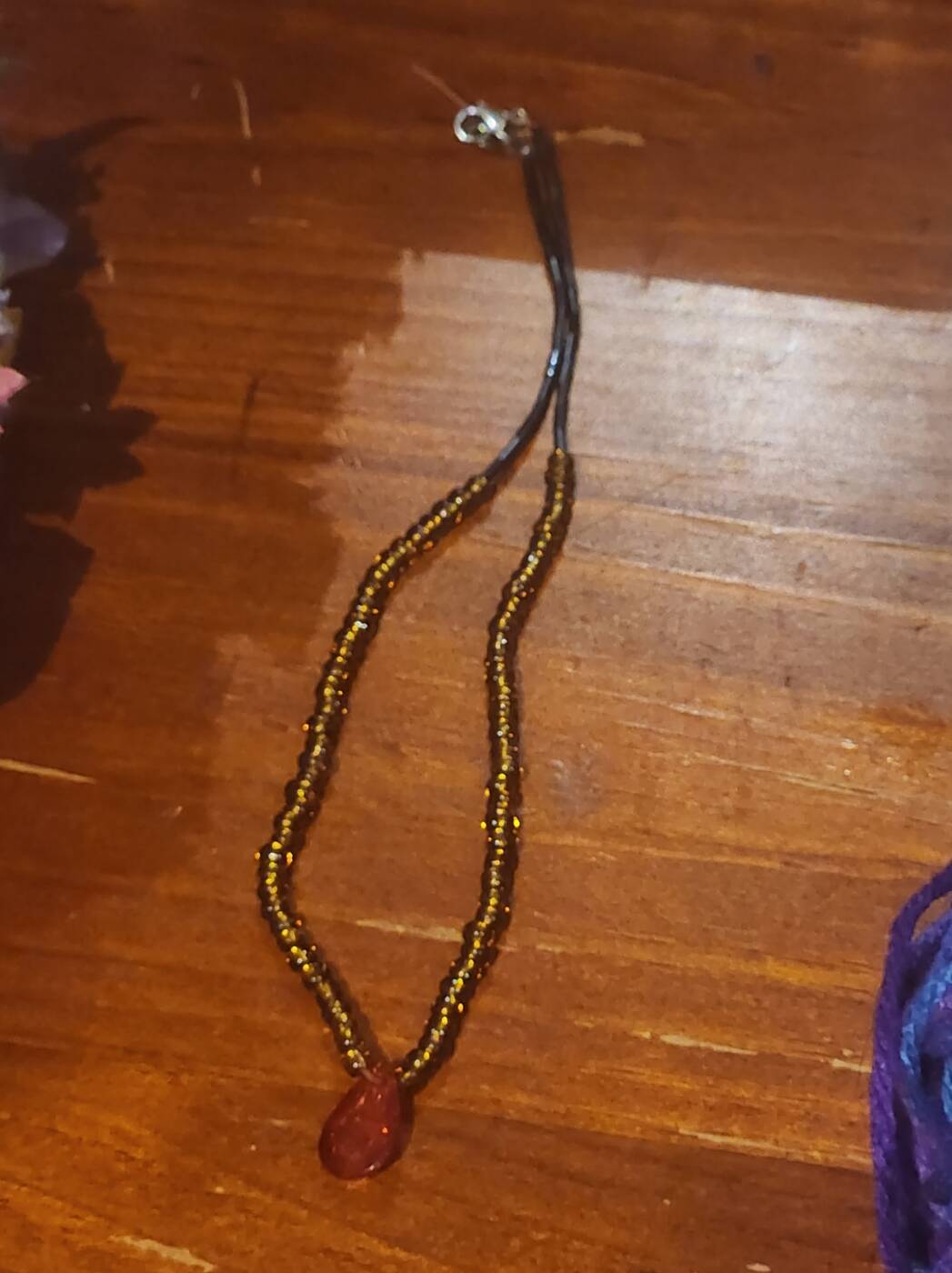

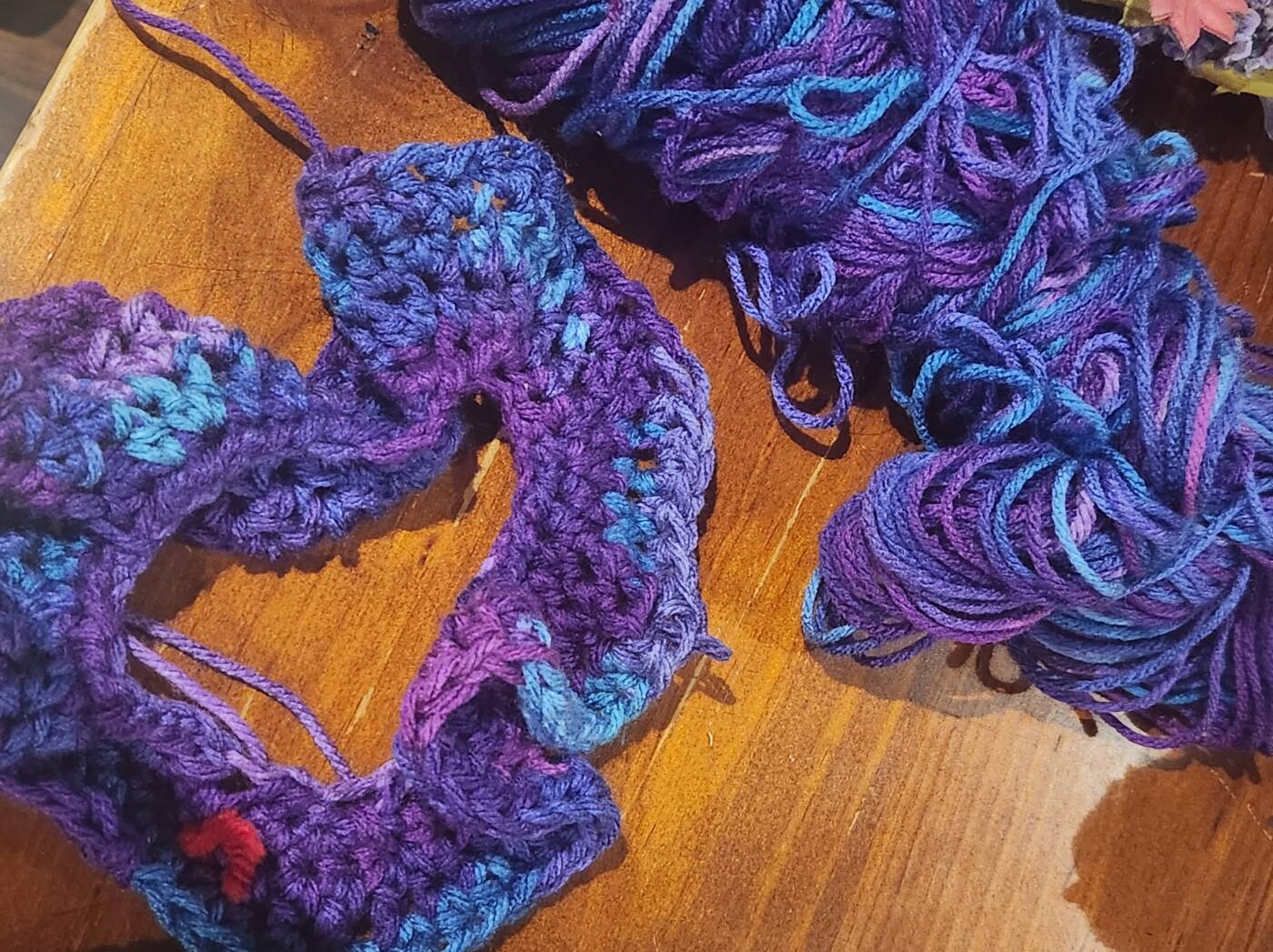
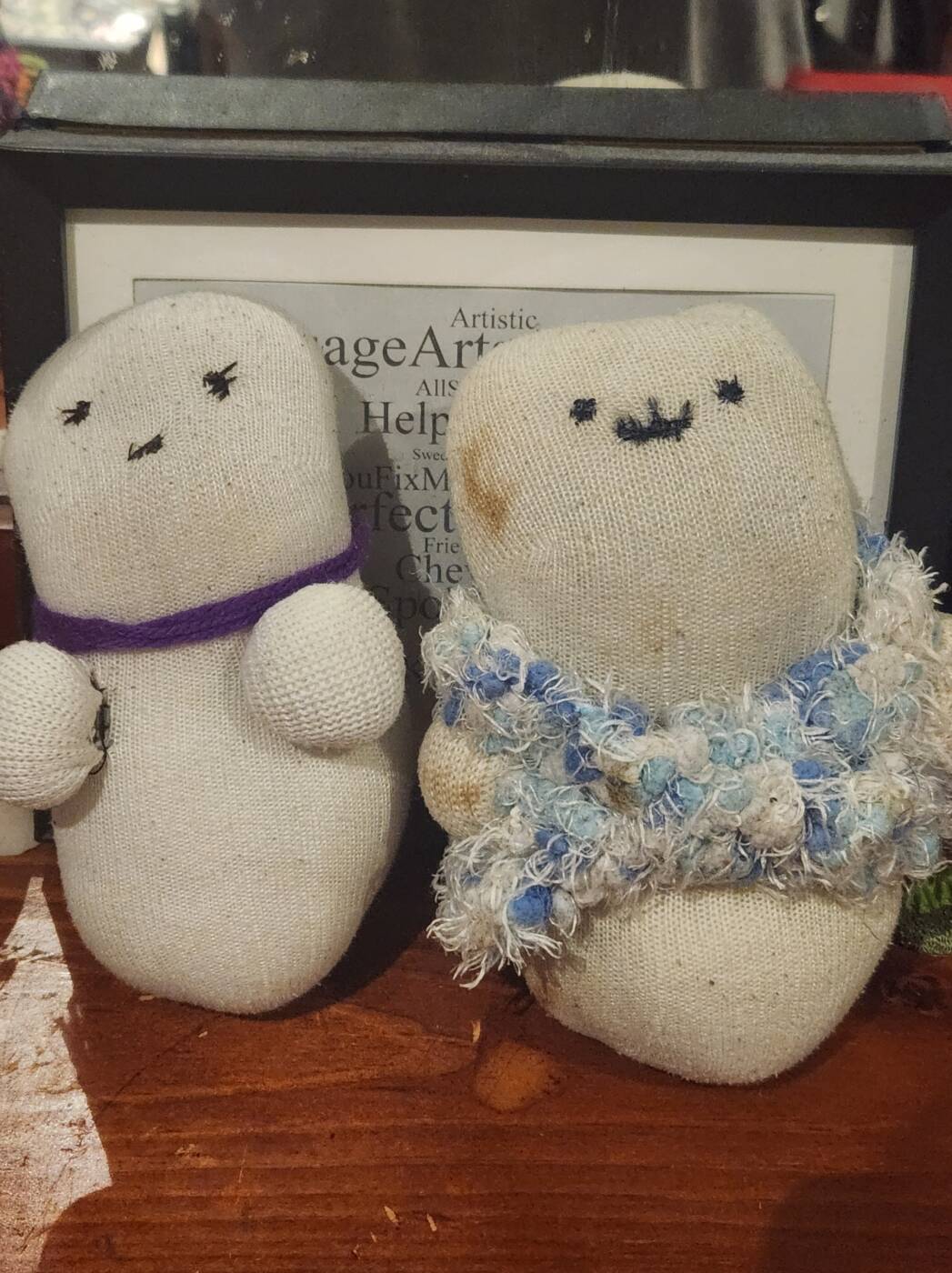
Hi Cheyenne remember to post description/artist statement for your videos ASAP! Thanks!